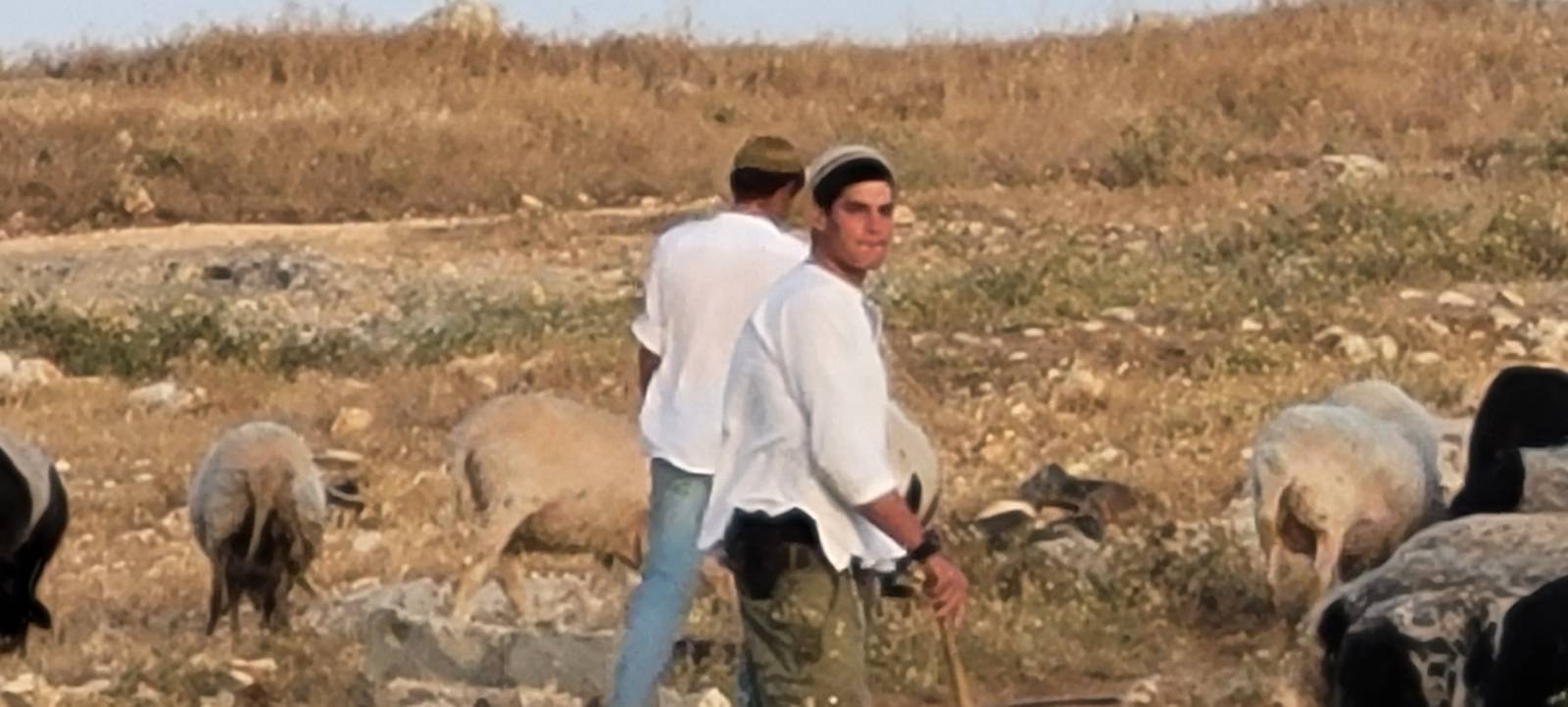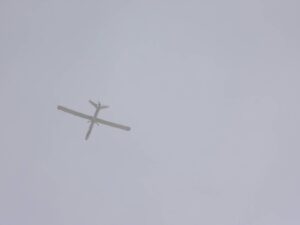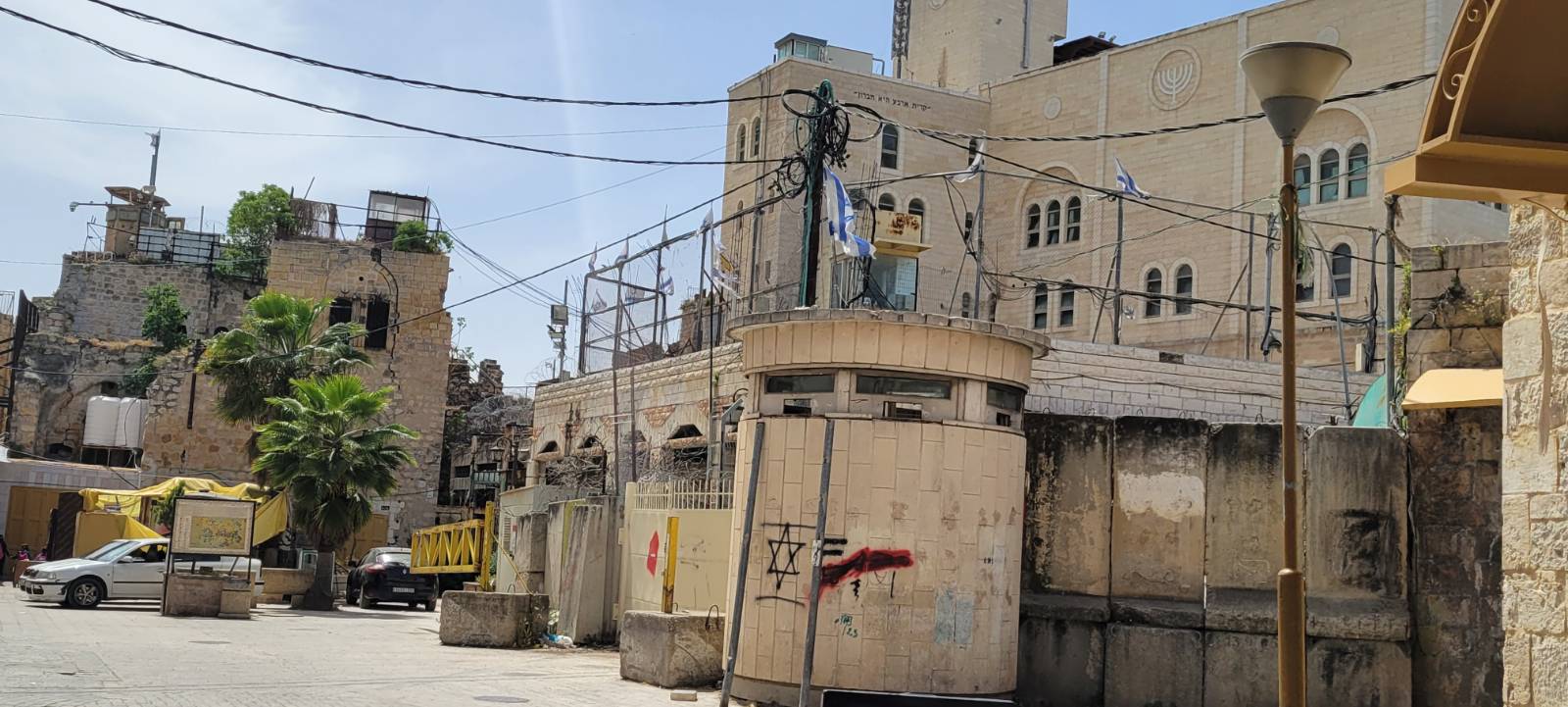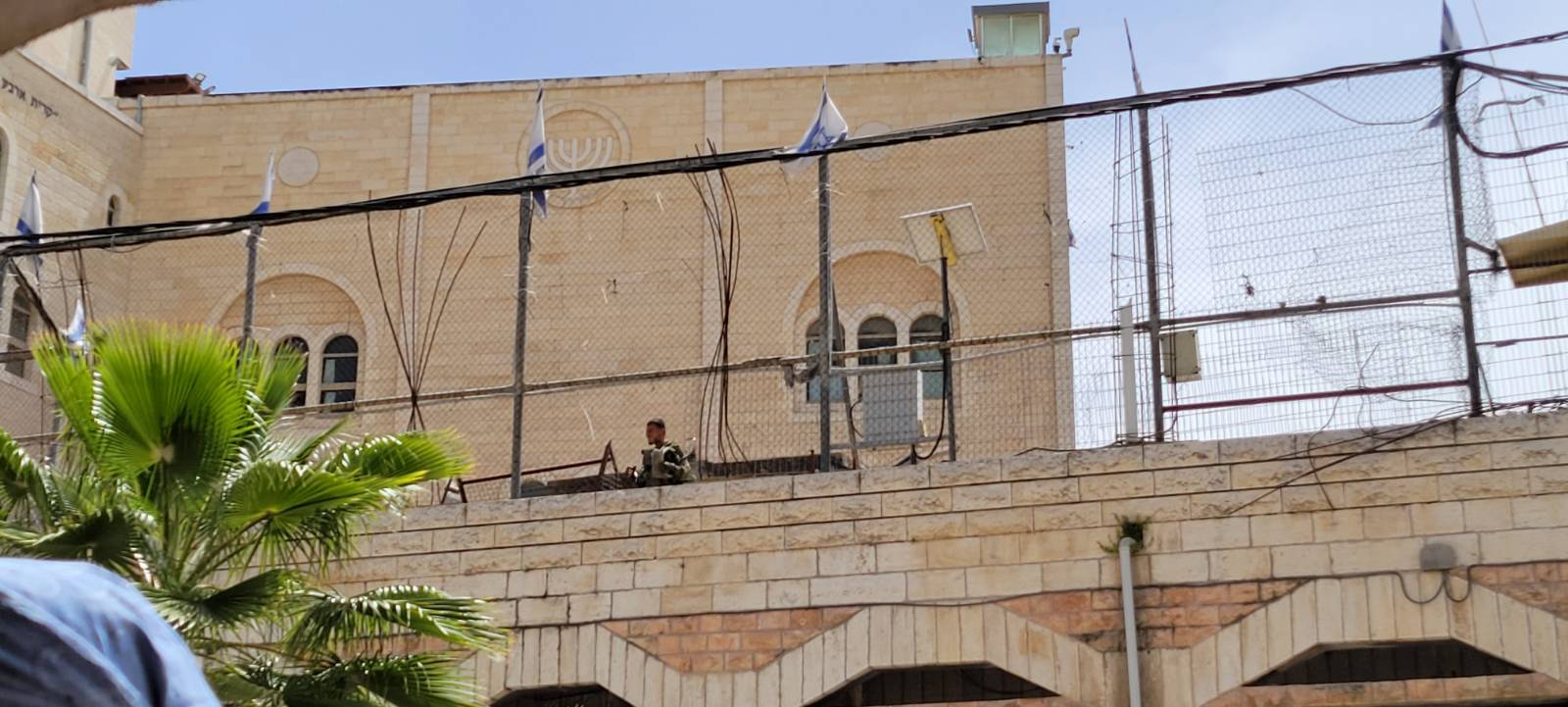

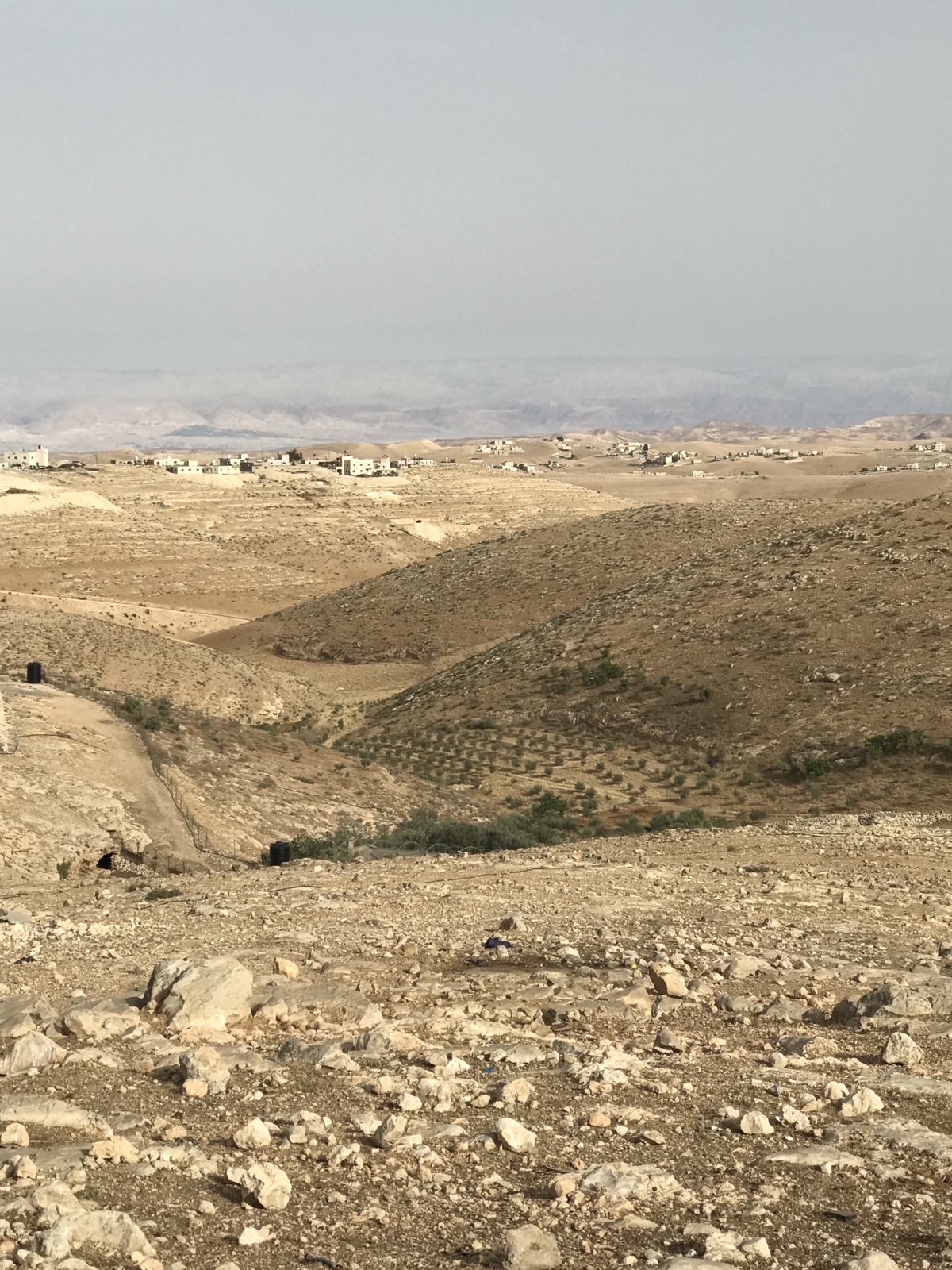 The following are updates from international human rights observers from the US and Europe who are in the West Bank right now:
The following are updates from international human rights observers from the US and Europe who are in the West Bank right now:
Content warning: torture
5/4/24
We’ve done a few released prisoner interviews since I’ve been here. I don’t usually report on them, but this one struck me differently somehow. Maybe because he’d just been released and still shows the signs of torture and recent extreme pain in his body.
The person we talked to today was put in administrative detention for 6 months and has been out for about 10 days.
Roughly 40 people in his area were arrested. They were all bound hand and feet, blindfolded, and then tossed out on gravel in the hot sun at 10am. They weren’t processed until 4 pm.
There were numerous torture sessions, the details of which I won’t go into. (We were given graphic detail.) The minister of national security, Ben Gvir, would often be present at these torture sessions. Sometimes settlers would be brought in to watch the sessions as well. Other times the Israelis would either live stream the torture sessions to the prisoners’ families or make a TikTok video and send it to them.
The only food they got was a little bit of bread and yoghurt in the mornings with maybe a little bit of something more on Saturdays. The person we were talking to lost 77 lbs during those 6 months.
When he was brought in for his security interview, he asked them why he’d been arrested. They responded that “this was war time” and that they were arresting everyone with previous arrests. (Which is just about every male here.) This person’s last arrest took place during the second intifada – in 2002. Twenty two years ago.
During these 6 months he was given only one chance to talk to his family, and that was for 2 minutes.
No medical care was provided. 13 prisoners were in a room intended for just 6.
—
4/21
Last night I stood on the second story of M’s house looking at the twinkling lights of the nearby town of Yatta. The view was beautiful until our eyes shifted to the right and we saw the glare of the floodlights that the nearby settlers had pointed towards his house, just one more ugly expression of their persistent harassment. His house is closest to the land the settlers have illegally claimed and their harassment of M and his family is near constant. He and his brothers have been beaten up repeatedly, arrested and shot at by these extremist settlers. Not just a few times, but dozens of times. They have thrown rocks at his mother and stolen their olive groves. One brother was beaten up so badly he was left for dead only to survive and have his leg amputated. Often they show up in the dead of night to peek through his windows and when M installed lights outside his house to deter them, they stole those lights and pointed them back at his house – the very ones that now glared into our eyes. The activists, as M calls us, help keep these settlers at bay, and we have a presence in his home every single night.
Earlier in the day my friend and I stood with M and his brothers and their children as two military vehicles idled in front of his house for almost an hour, while six soldiers in full gear stood outside their trucks with guns and loud voices. Filming the whole time, we watched and waited. At one point a white police van with flashing lights pulled up, but then quickly turned around and left. Some of the children kept their distance, while others pranced and danced in the street, ignoring the soldiers and singing songs, their voices carrying over those of the soldiers in a sort of symphony of opposites – the brute call of the loon and the sweet song of the robin. Eventually they left and we sat sipping sweet tea under the shade of a chinaberry tree. Just two hours later more army trucks arrived and raided a home in the middle of the village while soldiers with machine guns walked the streets and searched the fields. It’s just another day in the village of Tuwani.
“They try to take the smile off of my children’s faces,” M told me later that night while we watched the lights of Yatta. “They try to take everything from us, but this is our land, and we are still here. We will never leave this place. It is ours.”
This is sumud. Sumud is the Arabic word for steadfastness, but it is also a distinctly Palestinian idea that weaves perseverence and resilience into a kind of personal and collective resistance.
To exist is to resist. Sumud is everyday life in the occupied territories. It is an instinct for rootedness and survival and continuity in the face of constant Israeli surveillance, violence and harassment. Sumud is planting new olive trees when they burn yours down. It is rebuilding your home when bulldozers demolish yours. Sumud is staying put when the occupiers do everything they can to drive you out.
Walid Daqqah, a Palestinian prisoner who recently died in an Israeli jail after 38 years of torture and imprisonment, wrote while in prison that it was this spirit and resilience that was the the true target of Israeli aggression. That the Israeli apartheid regime recognized that the biggest threat to the Zionist project was what he called “searing consciousness,” the Palestinian collective consciousness that relentlessly births resistance to Zionism, Palestinian pride and an enduring self preservation and inability to be crushed.
Walid Daqqah was just 62 years old when he died after years of cruel Israeli mistreatment that included torture and humiliation and the withholding of food and medicine, even after his 2022 diagnosis of bone marrow cancer. Even as he grew closer to death, he was denied the right to a phone call to say goodbye to his wife.
But in perhaps the ultimate act of sumud, Daqqah leaves behind a four-year old daughter named Milad, born of liberated sperm snuck out beyond the prison walls. Denied in-person visits, Daqqah and his wife were part of a complex and well organized effort that has helped men in prison create a new generation of Palestinian children by smuggling sperm past security checks and into fertility clinics. 115 children have been born this way – a powerful strike against Israeli control and an affirmation of their right to existence. To joy, to life, to create, to continue and to return. 



—————-
4/23
The incessant whine of drones has hovered over us for hours today. There is little hope of escaping the zenana – an Arabic word referring to a wife’s nagging that Palestinians in Gaza have adopted to describe the drone’s oppressive noise and their feelings about it.
But this is not Gaza. I’m in the occupied West Bank, about 30 miles away from the Gaza Strip.
Masafer Yatta, in the West Bank, is home to many Palestinian herding communities, who reside in several small villages and hamlets. The residents have called this place home for decades, before the area was illegally occupied by Israel in 1967. The Israeli army has used huge swaths of the land as an active firing zone for years, putting the local communities here at risk.
In the 1980s, Israel declared the 3,000 hectares in Masafer Yatta as a firing zone for military training, calling it “Firing Zone 918.” Within the boundaries of the firing zone are 12 vibrant Palestinian villages.
In 1999 the Israeli military expelled all of the residents of Masafer Yatta, claiming they were illegally occupying a firing zone. In response, the families petitioned to the Israeli Supreme Court, marking the beginning of their 20-year legal battle.
Following the petition, the court issued an interim injunction allowing Palestinians to return to their homes and use the land for agriculture purposes, but banned them from building homes or infrastructure like power or water networks.
Meanwhile, the army continued to enforce home demolitions. According to Israeli human rights group B’Tselem, since 2006, Israel has demolished more than 64 homes in Masafer Yatta, displacing many Palestinian families, including 155 minors.
The army uses the firing zone designation as part of a policy of pushing Palestinians off their land as they are most often declared in areas where Palestinian communities are actively living.
Minutes from a secret meeting in 1979 revealed former Israeli Prime Minister, then-Agricultural Minister, Ariel Sharon admitting that he created firing zones in the West Bank for the sole purpose of “creating land reserves for [Jewish-only] settlements.”
In May 2022, despite providing all the historic proof of Palestinian ownership over this land, the Israeli High Court issued its final decision in the decades-long case, rejecting the residents’ petition and giving the IOF the green light to forcibly evict them from their homes. This is an act that would amount to forcible transfer, a war crime under international law.
The IOF is not alone in pressuring the Palestinian residents of Masafer Yatta. Areas that do not fall within Firing Zone 918 are surrounded by settlements which guarantees residents will face daily harassment by extremist settlers, and armed drones buzzing overhead (recording included).
These drones are almost impossible to see but impossible to ignore. The near daily presence of armed drones compounds the trauma and anxiety of those subjected to living under this illegal occupation.
As a little boy said to me when I finally caught a glimpse of the drone today, “This Zionist occupation kills people.”
I wanted to tell him it’d be okay, but I couldn’t. Instead, I made eye contact with the Israeli settler holding a M16 rifle only a few meters away behind the fence.
Here are a few resources to learn more about Masafer Yatta:
You can follow #SaveMasaferYatta on IG and join the effort here: https://savemasaferyatta.com/
————————————-
4/25/24
Two settler children, about 14 years old, are comically bad at shepherding. I watched them try to physically push the sheep to get them to move and was reminded that these are not indigenous people whose families have shepherded for generations. Throughout the nights we were awoken by the sounds of assault rifles. As Olivia mentioned in a previous dispatch, Masafer Yatta has been designated “firing zone 918” and is used for military training. As Ariel Sharon admitted, “the firing zones were created for one purpose: land reserves for settlements.” They are simply another form of land grab (https://www.
Most of my time at Z’s house is spent playing with the kids, drinking sweet tea, and eating lots of taboun bread. They remind me so much of my own family in Libya. Everything felt so familiar– the social norms, the food, the black tea with na’na (mint) that refills as soon as you finish it. “Kooli!” (eat!) has to be one of the most used Arabic words. But here there are three other words that are even more common and are the first you learn upon arrival: “MustouTen/مستوطن” (settler), “shirTa/ شرطة” (police), and “jeish/ جيش” (army).
This short video features a family we met: https://youtu.be/yJZOOZCH4qI?
———————–
4/26/24
There is no escaping the occupation. Its presence exists across every facet of Palestinian life, especially with regards to freedom of movement. Yesterday we went on a grocery store run and the only two paved roads into the nearby city were closed by the military. For no reason other than they can. We had to take a treacherous and steep rocky side road that is only accessible with 4- wheel drive. Traffic gets backed up as that is the only road in and out of the city, and many cars get stuck there. The occupation turns something as simple as getting groceries into a nightmare ordeal and makes a 15 minute ride take an hour.
Today we ran into the same issue on our way into Hebron for a day trip to the Old City. The roads to Yatta were still closed and we took the steep road again. Then the roads to Hebron were also closed and we had to take a detour that took us twice as long. It is important to note that these roads are only closed to Palestinians. Israelis are still free to use them. Within minutes of arriving in Hebron, we saw four heavily armed soldiers patrolling the street and they walked right between us with their hands on their assault rifles. There are surveillance cameras everywhere and the “zanana” sound of drones is heard overhead.
——————————–
4/27/24
We met up with a Palestinian activist comrade (we’ll call him “B”) who invited us for tea, told us about the history of Hebron, and shared some of his direct action stories with us. Inspired by civil rights activists in the US, he and his friends boarded a Jewish- only bus in 2011 to show that even though it is not technically illegal for Palestinians to ride Israeli buses, in practice they are fully segregated. The buses often pass through settlements, which are illegal for Palestinians to enter, and therefore it is an unwritten rule that they are not allowed to board. B and his comrades were forcibly removed from the bus and arrested for this act of civil disobedience (https://newint.org/features/
B walked us to his friend’s shop, right across from a massive settlement lookout with armed soldiers patrolling and eyeing us. His friend told me that building used to be his elementary school before the Israelis stole it and permanently occupied it. As we continued to walk we saw even more soldiers on foot and in military vehicles blocking roads. Behind them we could see settlers walking. Many of the streets have a barbed wire net above them because settlers throw their trash down into the streets where Palestinians live or shop from their settlements. We tried going to the famous Ibrahimi Mosque, only to find the checkpoint you are required to walk through was closed. We later learned that this was because the IOF closed the mosque to allow settlers, including the Minister of National Security, Itamar Ben Gvir, to storm it under the pretext of a Jewish holiday. (Today we learned Ben Gvir was in a car crash. We hope the car is okay.) They were dancing inside the mosque as we stood outside the checkpoint (https://www.instagram.com/
In 1994, Baruch Goldstein, a US-born settler, attacked hundreds of Muslim worshippers at this very same mosque and murdered 29 in what is known as the Ibrahimi Mosque Massacre. Ben Gvir praised Baruch Goldstein for his attack and was even known to have a picture of Goldstein hung in his living room. Israeli authorities placed the Old City of Hebron under military rule following this massacre (https://mondoweiss.net/2024/
We walked back to the shop where he shared more stories and showed us photos and videos of the army setting his shop on fire two years ago. The businesses in Hebron get far less tourism than Bethlehem or Al-Quds (Jerusalem) because the Israelis tell tourists that it is dangerous to go. And things have been even worse since October. Many businesses go days without a single sale. After buying multiple bags worth of beautiful art, glass, ceramics, and jewelry from the shops we went over to the famous Hirbawi factory and bought lots of kuffiyehs. It was really cool to see the factory in person and get a glimpse of how the kuffiyehs are made. We then took a service back to Yatta, again taking the long way back due to the road closures. Our service driver reiterated how the occupation sabotages daily Palestinian life as we drove by an incredibly foul smelling stream. He told us that it used to be clean water until the settlers started pouring their sewage into it. We’ve attached some screenshots of what he told us via the translation app. Most Palestinians are really aware of all the solidarity in the US and especially the recent encampments across university campuses. He had some really beautiful words to share that we wanted to pass along to you all.
After we finally made it back to the guest house I kept thinking about something B said that stuck with me throughout the day. He said that Shuhada Street is the brain of Hebron and the Old City is the heart. If Israel takes over both, the body dies. We are fighting to save the brain and the heart. Not just of Hebron, but of all of Palestine.



———————————————
4/28/24
There is no peace, even in death for Palestinians.
This has been the case for countless families who are being denied the right to bury their loved ones with dignity because Israel refuses to hand over their bodies after killing them. We are seeing this actively take place in Gaza.
There are hundreds of dead Palestinians being held by Israel, part of a decades-long policy that rights groups describe as a way to control and punish Palestinians and their families.
Some bodies are frozen in refrigerators while others are buried in nameless graves. These graves are identified only by a number corresponding to a file for each deceased individual.
Israel is the only country in the world that has a policy of confiscating and withholding human remains, which is a violation of international humanitarian law.
In 2019, the Israeli High Court approved the practice after several legal cases were brought against the state. They’ve effectively approved the use of stolen bodies to be used as bargaining chips.
There is no peace even in death for Palestinians.
This brings me to the story of Haj Suleiman, who dedicated his life to fighting for the rights of his village in Masafer Yatta, in the Occupied West Bank. I had the privilege of meeting his family and hearing their stories about how they were forcibly displaced by Zionist militias from the town of Arad in the Naqab (Negev) Desert during the 1948 Nakba. They were forced to leave behind their nomadic life as Zionists criminalized the possession and herding of black goats, targeting a centuries-old farming tradition to further its agenda of Palestinian erasure and dispossession. They were forced to settle and bought land in Masafer Yatta.
In the 1980s, the Israeli army began building the illegal nearby Jewish-only settlement of Carmel.
Like other Palestinian communities in Masafer Yatta, the village where I was staying lacks basic necessities such as electricity, water, education and health facilities, and residents are prevented from building permanent homes, forcing them to live in tin shacks and tents.
Meanwhile, the Carmel settlement is a green oasis filled with playgrounds and parks, and a chicken farm running on electricity.
These two places stand three meters apart and are separated by a wire fence. The community tent where I slept sat against this fence. Each night, I’d watch the silhouettes of armed soldiers walking past the tent and each morning, I’d listen to the settlers yelling to each other from their porches.
On January 5, 2022, several settlers from Carmel walked over to the fence and watched in anticipation as an Israeli police tow truck raided the Palestinian village to confiscate several unregistered cars.
Let me say something quickly about the unregistered cars before I continue. There are lots of them in the South Hebron hills. This is partly because the Israeli army won’t let Palestinians build roads, so they’re left to use dirt paths littered with potholes and jagged rocks. Any car wears out after a couple of years on these paths — and Palestinians are having to use these unpaved roads even more these days because the Israeli military continue to block/close paved roads to Palestinians (see Sasha’s last dispatch).
Israel also controls the importing of vehicles from Israel into the West Bank. The supply is severely limited, and the price of a second-hand vehicle is over ten times higher than their cost in Israel. Since Palestinian shepherds and farmers can’t afford to buy halfway-decent second-hand cars, they buy barely viable wrecks, most of them brought into Palestine for repairs but then sold. There is no way they would get registered as they wouldn’t meet safety standards. The Israeli police then come to confiscate them.
In this story, the tow truck driven by a settler, hit and drove right over Haj Suleiman as he attempted to stop the confiscation. His body was dragged for some ten meters over the rocks. The police and tow truck simply drove away, leaving Haj severely injured in the middle of the road.
He died in hospital days later.
More than 15,000 people travelled to attend his funeral and a beautiful memorial was built to commemorate his life, legacy, and activism.
Having now heard countless stories of how he had put himself between Palestinian families and Israeli forces, to peacefully protest the demolitions of entire Palestinian villages, I knew I wanted to visit his memorial which was only a short walk away through the ṣubbayr (cactus) and rocky hills.
What I found was once a beautiful memorial, but that day, it was smashed into pieces. For the third time, settlers had maliciously destroyed the memorial, along with a hand carved marble map of historical Palestine.
I was again reminded in that moment that under this brutal occupation there is no peace for Palestinians, even in death.
And there is certainly no justice.
Haj Suleiman’s murder was captured on camera by Palestinian activists, but even two years later, the Israeli police have yet to question the tow truck driver or review the footage.
You can read about Haj Suleiman and his legacy here: https://www.972mag.com/haj-
———————————————————–
4/18/24
Well, I had another piece in process, but my friend and I had such an eventful time at one of our homestays that I’ve gotta pivot.
Back to a farm in a beautiful valley, a stream flowing through, a walk through wheat fields to reach the two families who steward the land. Settlements and outposts flank the valley entirely – 3 of each, a total of 6. Our stay began delightfully enough – settling in, watching chickens that looked & sounded a lot like turkeys parade past our tent, meeting a brand new baby goat, wobbly on its legs but committed to standing up, falling, standing up, falling, again and again until it took its first steps. Evening fell next, and we corralled the goats and sheep into their pen. The sweet soundscape of bleats and baas and children’s laughter was soon disrupted by the sound of ATVs tearing down the hill from the closest settlement. Thankfully, they didn’t come any closer than a couple hundred meters before racing up another hill, and that was all for the night.
The next day, my friend and I watched two of the boys as they shepherded their flock in one of the nearby fields. (We listened and cried to an episode of Upstream as we did, the reading of a story entitled “Palestine 2031” by Nadia Zanghari, a beautiful and vivid envisioning of a dismantled occupation, a free Palestine and rebuilding of Gaza, 7 years from now. https://spotify.link/
Morning arrives, and the incessant, aggressive buzzing of a drone overhead pulls my friend and I out of our tent. It hovers, zips around, drops lower, pulls back, drops low again. It is clearly antagonizing us, also trying to get our faces on camera. We are reminded that Ben-Givr, the security minister has formed a task force to target activists on the West Bank and deport them/us for their solidarity work, and that a surveillance system called Blue Wolf exists. We keep our hats on and phones in front our faces during this encounter. After a few minutes it flies off.
A few hours go by. Conversation is disrupted by barking dogs. 3 settlers on horseback approach from the south, and within minutes have us swarmed, are galloping and parading, rampaging around. Children gather but keep their distance. The dogs bark and nip at the horse’s hooves. I ask what they want and if they will please leave. They respond in Hebrew, but in English tell me “it’s fine, it’s okay”, as though the unnecessary distress they’re causing and display of disregard and ego is somehow sanctioned and not a problem. The dogs effectively chase one of them off, we & cameras stay close to the other two, who eventually manage, (with poor horsemanship, I might add) to maneuver their horses down the rocky hill, across the stream, and once again back up to the closest settlement. We gather with the kids and family, remark on the whole experience, exchange jokes and laughter, and continue on with chores. It is then time for my friend and I to go, and for two other volunteers to take our place. We leave reflecting on how instantaneously a peaceful, smooth day is disrupted by the alarm of barking dogs and incoming settlers, what harassment they will spring this time, unknown. The constant vigilance necessary, ready to drop in a moment whatever one is doing to respond appropriately.
Thankfully, we haven’t heard anything in the ground chats from the volunteers now there, but we will see what tomorrow holds. and we will keep showing up until indeed Nadia Zanghari’s vision is a reality. 





————————————–
4/17/24
We left Masafer Yatta on Tuesday. A lot of emotions came up on the drive out: sadness to leave the people we got to know, guilt for leaving, anger about the injustice of it all, and determination to fight harder. The morning we left, a settler attacked a Palestinian shepherd on his property nearby. B. and other comrades rushed to the scene to document the violence just as the ambulance arrived. As I reviewed the photos of the blood spattered rocks and the injured man in the ambulance, I was reminded of the need for a constant international presence here. Luckily we left just as new comrades arrived. We plan to return and will also share info with you all in a future dispatch on how you can get involved.
We made our way next to Bethlehem and spent the day visiting the classic sights (Shepherd’s Field, the Church of the Nativity, Milk Grotto, Manger Square), eating kanafe, and enjoying the luxury of being able to take a shower, sleep in a bed, and access to fruits and vegetables. We saw the iconic artwork on the apartheid wall that cuts off Bethlehem from Al-Quds. Bethlehem is in Area A of the occupied West Bank and is in full control of the Palestinian Authority. However, 37 illegal Israeli settlements litter the city and families that have lived in Bethlehem for hundreds of years are routinely evicted from their homes and their land stolen to make way for the construction of additional settlements.

